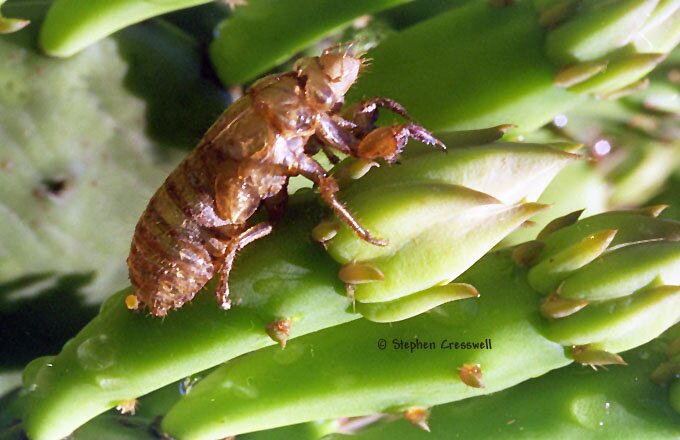
Family: Cicadidae
Subfamily: Tibicinae
Length: typically 35-40 mm
Every 13 or 17 years this species emerges from its underground home, often is amazing numbersestimates range from 8,355 to 3,700,000 per hectare (= 2.47 acres).
Chris Maier (1982) studied an emergence of Magicicada septendecim in Connecticut. Maier marked 4,800 of these cicadas and observed their activities. Emergence from the soil took place between 15 May and 30 June, with males tending to emerge earlier than females. More than 95% of the nymphs emerged between 6:00 and 9:00 p.m.
As adults, most activities took place between 10:00 a.m. and 1:00 p.m.
Males began calling, and subsequently mating, at five days after their last molt, and continued for about fifteen days. Females mated at six to twelve days after the final molt, and oviposited a few days after mating. Adults fed between ten and seventeen days after the last molt. All activity was suppressed on days of inclement weather.
Maier found that ovipositing took place on some 50 species of woody plants. The cicadas avoid conifers for oviposition, with the exception of Redcedar. Sometimes females simultaneously had their beak inserted in the twig, feeding, while their abdominal tip was inserted too, depositing eggs in the twig.
Regarding predation of birds on the cicadas, Maier reported the anomalous fact that bird numbers remained low while cicada numbers were high; when cicada numbers dropped the birds came into the study area and "annihilated the population in ca. 5 days." A possible explanation is that the din of many calling cicadas serves to keep the birds away until the calling period has passed.
More information available about broods and emergence dates, brood maps, and the 13-year and 17-year cycles.



